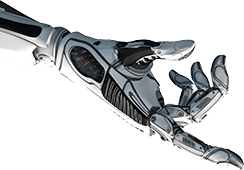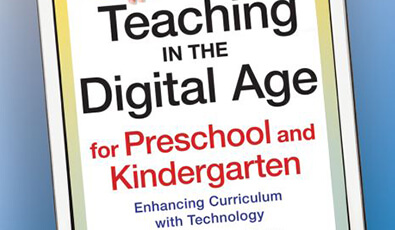

18.09.2018
By Veative

In India, the fifth of September is celebrated as Teacher’s Day, commemorating the birth of Dr. S Radhakrishnan, the first Vice President and second President of India. Dr. Radhakrishnan was also an exemplary educator, who believed that ‘true teachers are those who help us think for ourselves.’ Teachers, therefore, are not only instrumental in building knowledge networks and nurturing the growth of young learners, but more importantly, they have the power to decide the future of education. In an increasingly technologized world, it will be the responsibility of teachers to prepare their students to become technologically capable and equip them for the careers of tomorrow.
There is a mistaken belief that education is a commodity, Lewis H. Lapham opines, as if it were stuff that one pours into empty vessels. Instead, a competent teacher should ideally awaken the desire for learning in the minds of the students, and VR can effectively aid in this process. A VR-based learning environment allows students to exercise their own imagination, involves them more fully in the learning process, and when properly integrated into the classroom under the tutelage of their teachers, holds the potential to revolutionize educational practices. For far too long, byzantine rules and obsolete beliefs governing our ways of learning have stymied the sincere efforts of teachers to bring about a change in the education system. Teachers, it is now time to embrace the future and the future is virtual reality in education.
Teaching as letting learn
In his 1951–52 lecture series Was Heisst Denken? (What is Called Thinking?), the 20th century German philosopher Martin Heidegger observed, ‘Teaching is more difficult than learning because what teaching calls for is this: to let learn.’ The idea of letting the student learn undergirds the very act of teaching, since learning involves a ripening of the mind and not a passive ingestion of knowledge. However, what is equally important, as Heidegger points out, is that the teacher must be more teachable than the students. As our ways of learning change and technology becomes an integral, and even inextricable, part of the learning process, teachers must be amenable to rethinking their approaches towards teaching. In their essay, ‘Integrating Technological Innovations to Enhance the Teaching-Learning Process’, Estes et al. emphasize upon the fact that while emergent technologies like VR offer a unique venue to enact learning and practice skills, they also require teacher training, support, and opportunities for experimentation. Benefits stemming from the integration of technology into classrooms has a direct relationship with pedagogy-supported use of that technology. The researchers add that teachers can spearhead the use of technology to promote experiential learning, creativity and innovation in both physical and virtual environments. After all, VR is a medium which most fittingly exemplifies the adage that experience is the best teacher.
VR is not just for students, it must also engage teachers
In her book Teaching, Learning, and Visual Literacy, Billie Eilam states that any attempt to change, reform, and improve education must be imbued with the intimate knowledge of the concrete, contemporary realities of educational practices. Thus, even though there is a recurrent misconception that immersive learning in VR can make teachers irrelevant in the classroom, reality paints a different picture. Immersive learning through VR allows the instructor to act as a facilitator, empowering teachers to devote more time towards understanding different learning styles and making necessary additions to the curriculum. One example of this is by using analytics and referring to reports of student data from within the VR environment, teachers can track a student’s understanding of the topics being taught, and bring about changes in pedagogical methodology accordingly.
Enhancing a teacher’s ability in the classroom
Though teachers determine the pathways for dissemination of knowledge, there are limitations to what a teacher can do. VR helps in enhancing the teacher’s ability, and in no way acts as a replacement or substitute. For instance, by training teachers in how to use VR, we can endow them with the skills to successfully implement VR technology in the classrooms that will be specifically designed to cater to the needs of that classroom. The training of teachers will ensure that all the rough edges are smoothed out before getting into the hands of students, especially in figuring out things such as how to set up a VR lab, invite students into that lab, and run a module as a class. Teachers have a major stake in influencing how educational technology affects educational ecosystems, and through their able and informed guidance, students can be empowered to avail the best of what VR has to offer. Yet, as daunting as that might seem, it is imperative that a pedagogically-sound system be in place to facilitate the use of VR, which should likewise be tied to the curriculum. No less of a system should be introduced into classrooms, lest we give up the chance of leveraging the benefits of this technology. When such an educational VR system is in place, adoption by teachers worldwide will be swift, practical and well-used.
Bringing the world into the classroom
For students who may not get a chance to physically explore sites of historical and cultural importance around the world, possibly due to financial, geographical, or temporal constraints, virtual tours offer an engaging and economical recourse to such situations. In their essay, ‘The Application of Virtual Reality Technology in Teaching Reform’, Liu Xiaoying and Su Xianbo observe that VR technology has injected new vigor and vitality into the field of education, playing an active role in promoting reforms of teaching concepts, methods, contents, etc. As a new instructional medium, VR can optimize the teaching process by bringing the world into the classroom. With distance, time and expense being major factors in curtailing mobility, virtual tours can be considered a cost-effective alternative for students to travel around the world, giving them a sense of the diversity of cultures that the world at large has to offer.
Connecting the dots
For a lot of students in class, they may experience problems in connecting with an abstract concept due to differences in learning styles, time constraints, and so on. Through VR, teachers can help students connect the dots. As Jeremy Bailenson underscores in his book, Experience on Demand: What Virtual Reality Is, VR is an entirely new medium, with its own unique characteristics and psychological effects, and it will utterly change how we interact with the (real) world around us, and with other people. The vatic force of Bailenson’s faith in VR is hard to miss as he envisages the mass adoption of this affordable and powerful technology in the near future which, when combined with vigorous investment in content, will unleash a torrent of applications touching every aspect of our lives. Hence, as Bailenson stresses, each of us will have a role in defining how this technology is shaped and developed. For teachers, the critical challenge, believes Bailenson, will be to find a balance between distraction and narrative in the lesson, and capably steering students toward the joy of learning while imparting social, moral and affective lessons through VR.
Identifying learning gaps
Identifying learning gaps is critical to the task of teaching. Hence, one of the most conspicuous benefits of VR is in allowing technology to free up the teacher’s valuable time so that they can perform more efficiently. Firstly, robust analytics will help the teacher to identify and then address learning gaps. Secondly, to make the most effective use of VR technology in the classroom, teachers can plan and create their own lesson plans by using sample lesson plan templates. These steps would lead to the creation of a well planned immersive experience for students, motivating and engaging them simultaneously. As George Steiner eloquently exhorts, ‘rouse the child and the student to the inexhaustible fun and provocation of the unsolved; and you will have flung open doors on “seas of thought” deeper and more richly stocked than any on the globe.’ The primary responsibility of teachers therefore is to fire up the latent strengths of a student’s imagination, everything else is secondary.
Accommodating different learning styles
Disruptive students can be placed into a virtual environment for a longer time, allowing them to still engage with a topic, while also giving more time to the teacher to help others. Hence, VR can help in increasing valuable instructional time and positively impact student learning more widely. Think of the classroom as a symphony orchestra and if one violin is off tune or an accordion is out of order, the result is a strange cacophony and not the sweet melody that the conductor was expecting. Teachers too have to strike a fine balance in the classroom as every student is different. VR can assist teachers in finding a way to accommodate every student as per their individual needs. Consequently, teachers can not only bolster the efforts of the best, but also motivate struggling students to persevere in their studies.
Scores and results assist learner and teacher alike
A University of Chicago study found that students who gain a physical experience of scientific concepts, such as torque and angular momentum in this case, are able to understand the topic in greater depth and also achieve improved scores in a post-experiment quiz. Considering that the crux of the argument for VR in education lies in the notion of learning by doing, students can benefit immensely from a deeper level of connection with a concept, the results of which may then be quantified through test scores. Additionally, concepts that are complex and challenging, such as climate change, ocean acidification, extinction, and glacier erosion, can be better explained through VR. At Jeremy Bailenson’s Virtual Human Interaction Lab, ‘just about anyone might be able to experience environmental change in the Amazon, the Arctic, or even under the ocean.’ The intended outcome is a fuller understanding of the issue and a more proactive approach towards finding a solution.
Conclusion: The learning curve
Teachers, writes Dana Goldstein, have been embattled by politicians, philanthropists, intellectuals, business leaders, social scientists, activists on both the Right and Left, parents, and even one another. More pointedly, necessitating creativity and innovation in the classroom is a tall order when teaching as a profession is both admired and attacked in equal proportion. As John Dewey pronounced in 1895, education is, and forever will be, in the hands of ordinary men and women. However, what these ordinary men and women do can have extraordinary consequences for generations to come. Teachers have the undeniable power to make a difference in the lives of their students, and with great power comes great responsibility. Therefore, it is incumbent upon teachers to think of the best possible ways in which they can augment the educational experience of their students. The learning curve for VR in education can be steep, however when properly designed, educational VR can be easily adopted by teachers of all technical abilities, ensuring that this engaging technology works to enhance the efforts of teachers, and is not yet another demand on the time and energy of teachers everywhere. Only then can VR effectively find its way into the classroom.
References
Bailenson, Jeremy. Experience on Demand: What Virtual Reality Is, How It Works, and What It Can Do. W. W. Norton & Company, 2018.
Dalgarno, Barney; Mark J. W. Lee; Lauren Carlson; Sue Gregory and Belinda Tynan. ‘An Australian and New Zealand scoping study on the use of 3D immersive virtual worlds in higher education’. Australasian Journal of Educational Technology 27 (1), 2011.
Eilam, Billie. Teaching, Learning, and Visual Literacy: The Dual Role of Visual Representation. Cambridge University Press, 2012.
Goldstein, Dana. The Teacher Wars: A History of America’s Most Embattled Profession. Knopf Doubleday Publishing Group, 2014.
Lapham, Lewis H. ‘Playing with Fire’. Lapham’s Quarterly.
Steiner, George. ‘School Terms’. Lapham’s Quarterly.
Quay, John. ‘Heidegger on Teaching’. Encyclopedia of Educational Philosophy and Theory edited by M. A. Peters. Springer, 2017.
Xiaoying, Liu and Su Xianbo. ‘The Application of Virtual Reality Technology in Teaching Reform’. Advanced Technology in Teaching. Edited by Wei Zhang. Springer Science & Business Media, 2012.



